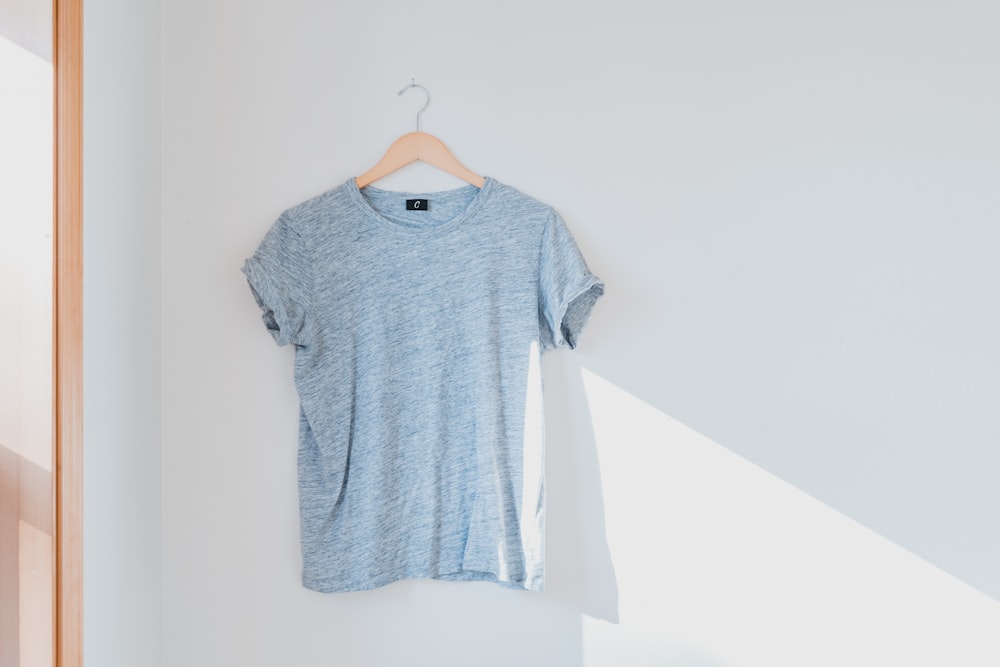Make the most out of spring cleaning with these resale sites

Spring is coming, and with it comes major wardrobe changes. As the world grows greener and more refreshing, the time for sundresses and bright sweaters, and the strong urge to clean out the old to make space for the new begins to rear its transformative head. But the weight of what to do with the old clothes just sitting in your closet doesn’t disappear when you choose to throw them away.
Textile waste is a huge problem. According to the Environmental Protection Agency, 17 million tons of old clothes wound up in landfills in 2018. These clothes can take up to 200+ years to decompose—releasing greenhouse gases into the atmosphere and leaking toxic dyes and chemicals into the soil for over two lifetimes. These clothes also take an immense amount of energy and resources to make: the average cotton shirt requires 2,700 liters of water—that’s enough to keep you or me hydrated for almost 3 years!

So what should we do come spring cleaning time?
The perfect solution would be to stop buying. Reducing our want to consume and investing in versatile, ethically made clothing would also reduce our need to throw clothes away. But while this is a perfect idea in theory, we can’t free ourselves from the influences of consumerism in one day. We aren’t perfect, and that’s okay. Trends and people change just like the seasons, and while the best course of action would be to buy less and more ethically, sometimes all we want is a fresh start. Giving our old clothing new life through reselling, where sustainably-minded fashion lovers can exchange their old (but still wearable) clothing for cash, is the next best option. There are tons of physical and online stores that exist just for this purpose, providing sellers platforms to present their items on and buyers a wide selection of pre-loved clothing to choose from. These stores, websites, and apps especially make reselling old clothes fairly easy, and each have their own unique features and setbacks. So whether you’re trying out a new look, looking to make some extra cash, or are just looking to clean out your closet; here are some sites that’ll turn your old clothes into cash.

Depop
Likely the most well-known clothing resale site out there, Depop gives users full control over the whole resale process. On the Depop app and website, users can create profiles and develop their “brand” as both sellers and buyers. Sellers post listings, determine the prices, and describe their items in a format similar to Instagram while potential buyers browse the site, like, and comment on items that catch their eye. There’s no separation between sellers and buyers on Depop, and each user’s likes are made public to display their personal style. Because of this, Depop sales are very image-driven and the work of promoting each item online is up to the seller. Though it’s free to list clothing on Depop, the site takes 10% of the profits of any sale and gives sellers the option to pay out of pocket for shipping or leave the cost of shipping up to the buyer.
Poshmark
Like Depop, Poshmark also gives users the ultimate deciding power when it comes to their listings. Through Poshmark, sellers can post their listings for buyers to browse and determine the price of each item themselves. Unlike Depop, Poshmark’s interface looks more like an online department store than a social media app—with more specific search criteria and a wider range of items to sell (users can sell unused beauty and home products as well as clothing). There is also a Poshmark app, making the seller’s job of taking pictures and posting listings easier while allowing users more access to the thousands of pre-loved items on the site. Poshmark users can also use the profits made from their sales to buy items listed on the site. Buyers can still like and comment on each item on the Poshmark website, and when a sale is made, Poshmark takes $2.95 out of the profits for sales under $15 and 20% of any sales exceeding $15.
With both Depop and Poshmark, shipping is up to the seller, making it their responsibility to package and send items to their buyers. For those of us with a less than satisfactory knowledge of how postal services work; finding boxes, printing labels, and sending them off to their new owners seems like a lot of work. There’s also no guarantee that items will sell, so it could take weeks or even months to reap the fruit of your labor on sites like these. Other resale sites make the selling process easier by acting as the middleman between buyer and seller, and may even pay upfront for items but often take more commission. Some examples are:
Material Wrld
Likely the most strict of all the sites listed, Material Wrld makes closet cleanouts easier by sending users a free trade-in kit to load their clothes into and assessing and pricing the clothing themselves. Though only taking certain brands, Material Wrld pays users for the clothes they accept through store credit, a prepaid debit card valid for use in other stores, or cash through Paypal at 85% of the listed price. Users never have to worry about shipping or wait for items to sell, and can even choose to donate non-resellable items to Housing Works, an NYC-based nonprofit.
thredUP
thredUP also grants users the freedom to sell their old clothes without having to worry about shipping or setting prices. Users order free kits to send their old clothes in and the site assesses and prices the items according to their trendiness and quality. Items in good condition are then listed for sale on the website, while the rest are sent to textile recycling plants. thredUP pays you upfront for newer or trendier items, eliminating the need to wait for a sale. For out of season or older items, users are paid when they are bought by other users, and thredUP takes anywhere from 20 to 95% of the selling price depending on the sale price.
Buffalo Exchange
Buffalo Exchange is another, more immediate option for people looking to recycle old clothes. Sellers can drop off their clothing to be assessed and priced in-person or by mail and receive payment upfront for the items that the store is interested in. Sellers get 30% of the selling price in cash or 50% of the selling price in store credit and do not have to worry about shipping or waiting for items to sell to cash out.
Crossroads Trading
Like Buffalo Exchange, Crossroads Trading also allows people to drop off clothes in-person or by mail via a prepaid shipping label. The items are assessed and priced and users receive 30% of the selling price in cash or 50% of the selling price in-store credit.
Even with steeper commissions, sites like thredUP make the process of cleaning out your closet both more lucrative and sustainable. Sites like Depop and Poshmark, on the other hand, bring more flexibility and personality to the resale process making it the favorite of those of us with more industrial mindsets and a knack for social media promotion. Regardless of which platform you choose, these sites are an important step in the right direction for fashion. Replacing the need to consume with sustainability, they offer a better alternative to textile waste and breathe new life into old clothing—making a healthier and more stylish future a reality. So if you’re looking to empty out your closet and fill up your wallet, these sites are perfect for you.


Hi there to all, the contents existing at this website are truly remarkable for people experience, well, keep up the good work fellows. Gregg Pectol
Thanks regarding providing these types of good write-up. Hal Massengill
I think the admin of this web site is truly working hard in support of his website, as here every data is quality based information. Dannie Jarett
Some truly nice and useful information on this website, as well I think the design holds superb features. Bruce Fredin
I cannot thank you enough for the article post. Thanks Again. Awesome. Joshua Alfrey